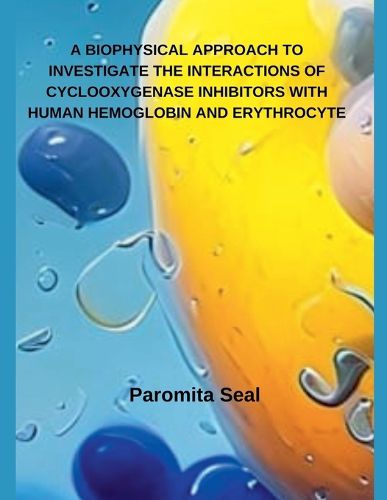Readings Newsletter
Become a Readings Member to make your shopping experience even easier.
Sign in or sign up for free!
You’re not far away from qualifying for FREE standard shipping within Australia
You’ve qualified for FREE standard shipping within Australia
The cart is loading…






This title is printed to order. This book may have been self-published. If so, we cannot guarantee the quality of the content. In the main most books will have gone through the editing process however some may not. We therefore suggest that you be aware of this before ordering this book. If in doubt check either the author or publisher’s details as we are unable to accept any returns unless they are faulty. Please contact us if you have any questions.
For last few decades, drug-protein interaction plays a crucial role in the transport and distribution of various molecules in the physiological system. Interaction between ligand and biomolecules especially protein (3) has motivated interdisciplinary research concerning both synthetic and analytical biochemists to ascertain the biological function of small molecules. However, blood proteins enact the most active and assorted roles in cells by delivering diverse functions including the control of biochemical reactions, providing intracellular and extracellular scaffolding, transport of different bio-molecules, controlling enzymatic action, and building the immune system (4). Generally, drugs are administered through several routs like, oral, sublingual, buccal, topical, parenteral, transdermal, subcutaneous, intramuscular, intravenous, vaginal and rectal. After being distributed in the circulating blood drugs bind to their carrier proteins in the plasma in varying degrees. In common, such binding is undergoes reversible and rapid equilibrium process between bound and free molecular species.
$9.00 standard shipping within Australia
FREE standard shipping within Australia for orders over $100.00
Express & International shipping calculated at checkout
This title is printed to order. This book may have been self-published. If so, we cannot guarantee the quality of the content. In the main most books will have gone through the editing process however some may not. We therefore suggest that you be aware of this before ordering this book. If in doubt check either the author or publisher’s details as we are unable to accept any returns unless they are faulty. Please contact us if you have any questions.
For last few decades, drug-protein interaction plays a crucial role in the transport and distribution of various molecules in the physiological system. Interaction between ligand and biomolecules especially protein (3) has motivated interdisciplinary research concerning both synthetic and analytical biochemists to ascertain the biological function of small molecules. However, blood proteins enact the most active and assorted roles in cells by delivering diverse functions including the control of biochemical reactions, providing intracellular and extracellular scaffolding, transport of different bio-molecules, controlling enzymatic action, and building the immune system (4). Generally, drugs are administered through several routs like, oral, sublingual, buccal, topical, parenteral, transdermal, subcutaneous, intramuscular, intravenous, vaginal and rectal. After being distributed in the circulating blood drugs bind to their carrier proteins in the plasma in varying degrees. In common, such binding is undergoes reversible and rapid equilibrium process between bound and free molecular species.